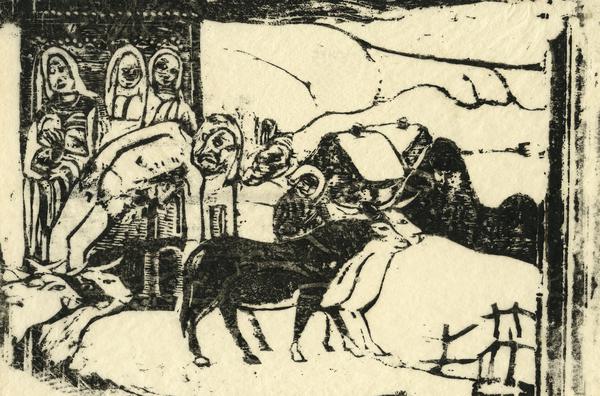Le Calvaire Breton
Accession Number NWHCM : 1989.136.2
Description
Print, 'Le Calvaire Breton' by Paul Gauguin (1848-1903), woodcut on paper, 1898-9; 14.8 x 22 cm
Read MoreLe Calvaire Breton
A former stockbroker who painted in his spare time, Paul Gauguin was largely self-taught and did not become a full-time artist until 1885. Interested in the directness of so-called 'primitive' art from Africa and Asia, he sought a simplification of form in his own work, renouncing his earlier Impressionist influences. In 1886 he first stayed in Pont-Aven, a small fishing village and artist colony in Brittany where he admired the spiritual intensity and what he described as the 'savagery' of the local inhabitants.
Gauguin was an influential exponent of wood engraving and woodcut as art forms. He made this woodcut in Tahiti (where he had moved in 1895) using a piece of furniture as his plate: the ridges visible on the right come from the furniture's mouldings. The print harks back to Gauguin's time in Brittany: the landscapes and costumes are clearly Breton, and the subject is closely related to his famous 1889 painting Le Calvaire Breton or Le Christ vert. In 1899 Gauguin wrote from Tahiti to the critic André Fontainas, 'I dream of violent harmonies ... Animals rigid as statues, with something indescribably solemn and religious in the rhythm of their pose, in their strange immobility. In eyes that dream, the troubled surface of an unfathomable enigma.'






